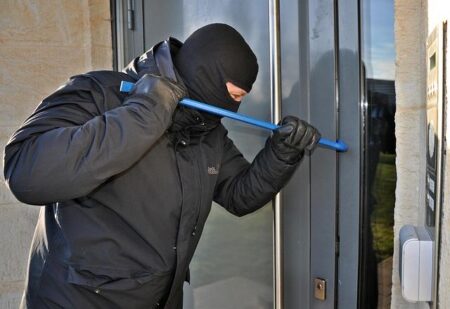Reimagining Geography in Television: The Case of “This is Us” and Its Portrayal of Commutes
How “This is Us” Redefines Travel Times Between Alpine, NJ, and Philadelphia, PA
The popular drama series This is Us is renowned for its emotionally charged storytelling and complex character arcs. However, it also takes notable creative liberties with geographic realities, particularly regarding the travel time between Alpine, New Jersey, and Philadelphia, Pennsylvania. While the show often depicts this commute as a brief journey, real-world data reveals a much lengthier trip. According to current traffic analyses, driving between these two points typically requires between 90 minutes and two hours, depending on congestion and time of day.
To illustrate, here’s a breakdown of the actual travel details:
| Route | Distance | Average Drive Time | Rush Hour Duration |
|---|---|---|---|
| Alpine, NJ to Philadelphia, PA | Approximately 85 miles | 1 hour 45 minutes | Up to 2 hours |
| Alpine, NJ to New York City, NY | About 15 miles | 30 minutes | 45 minutes |
Despite these figures, the series compresses the timeline to maintain narrative momentum, a choice that has sparked discussion among viewers familiar with the region’s geography. This approach highlights the tension between storytelling efficiency and geographic authenticity in contemporary television production.
Geographic Distortions in Television: A Closer Look at “This is Us”
It is common for TV dramas to adjust real-world geography to suit plot demands, and This is Us exemplifies this trend. The show’s portrayal of the commute between Alpine and Philadelphia significantly shortens the actual distance and travel time. In reality, the journey spans roughly 75 to 85 miles and usually takes between 90 and 120 minutes by car, or a similar duration by NJ Transit trains connecting the two cities.
Essential geographic details include:
- Distance: Around 75-85 miles
- Typical commute duration: 1.5 to 2 hours
- Common transportation: Personal vehicles, NJ Transit trains
- Depicted commute time on the show: Approximately 30 minutes
| Route | Actual Distance (miles) | Real Commute Time | Show’s Portrayed Time |
|---|---|---|---|
| Alpine to Philadelphia | 75-85 | 90-120 minutes | ~30 minutes |
While these adjustments serve the pacing and emotional impact of the series, they also raise questions about the balance between dramatic license and geographic fidelity. For viewers residing in the Northeast, such discrepancies can momentarily disrupt immersion, yet for the broader audience, the emotional narrative often takes precedence over precise location details.
How Fictionalized Commutes Shape Audience Understanding of Distance
Television storytelling frequently manipulates spatial realities to enhance plot development and emotional engagement. In the case of This is Us, the abbreviated commute between Alpine and Philadelphia challenges viewers’ perceptions of actual travel distances and times. This creative choice, while effective for narrative flow, can blur the distinction between authentic geography and fictional convenience.
Such fictional compressions influence audience perceptions in several ways:
- Shortened distances create an illusion of ease and accessibility.
- Emotional storytelling often outweighs geographic precision.
- Viewer expectations about travel logistics may become skewed.
- Regional identities risk being oversimplified or misrepresented.
| Actual Distance | Fictional Commute Time | Typical Real-World Commute Time |
|---|---|---|
| Alpine to Philadelphia (~80 miles) | Under 1 hour | 1.5 to 2 hours |
These distortions can subtly influence how viewers conceptualize geography, potentially affecting their understanding of regional connectivity and travel feasibility.
Strategies for Improving Geographic Realism in Television Narratives
To foster greater authenticity and audience trust, television creators should strive to incorporate accurate geographic details when depicting real-world locations. Reflecting true travel times and distances not only enhances narrative credibility but also honors the lived experiences of local viewers. Engaging with local experts, consulting up-to-date transit data, and utilizing detailed maps during the writing and production phases can help avoid jarring inconsistencies such as implausible daily commutes.
Moreover, embedding regional cultural nuances alongside accurate geography enriches the storytelling experience. Below are recommended best practices for integrating geographic authenticity into television scripts:
| Element | Best Practice |
|---|---|
| Travel Duration | Depict realistic commute and travel times based on current data |
| Local Landmarks | Feature recognizable, region-specific sites to ground the story |
| Community Culture | Incorporate authentic local customs, dialects, and social practices |
| Transportation Methods | Accurately portray common transit options and routes |
Adhering to these guidelines can help storytellers maintain a harmonious balance between creative expression and geographic integrity, ultimately enhancing viewer engagement and satisfaction.
Final Thoughts: The Intersection of Storytelling and Geography in “This is Us”
By compressing the commute between Alpine and Philadelphia, This is Us challenges traditional geographic constraints within television narratives. This approach reflects a broader trend in media where emotional storytelling and character development often take precedence over strict adherence to real-world logistics. As the series continues to resonate with audiences, it also invites reflection on how place, time, and narrative intertwine in modern storytelling, encouraging creators to thoughtfully navigate the balance between dramatic needs and geographic authenticity.








